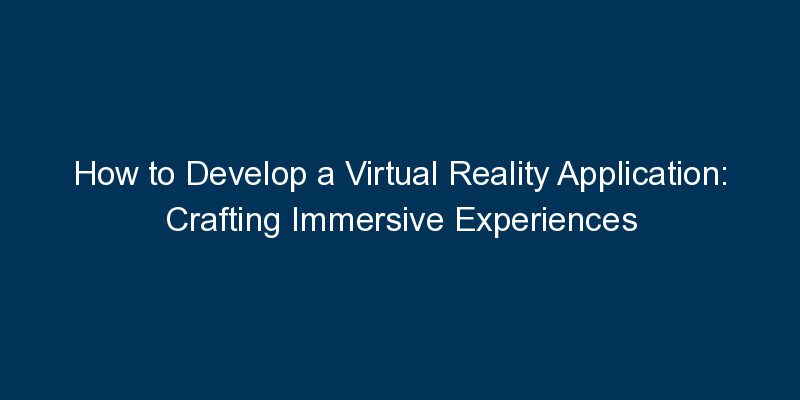Virtual reality (VR) applications offer users immersive and interactive experiences in a simulated environment. This blog provides a comprehensive guide on how to develop a virtual reality application, enabling developers to create engaging and memorable VR experiences across various platforms.
Introduction:
The demand for virtual reality experiences is on the rise, spanning industries from gaming and entertainment to education and healthcare. This guide explores the key steps involved in developing a virtual reality application, allowing developers to craft immersive and captivating digital environments.
Key Steps to Develop a Virtual Reality Application:
- Define VR Application Objectives: Clearly define the objectives of your VR application. Whether it’s gaming, training simulations, or virtual tours, understanding your goals is crucial for effective development.
- Select VR Development Tools: Choose the appropriate development tools for your VR application. Unity and Unreal Engine are popular choices that support VR development and provide extensive libraries for creating immersive content.
- Hardware Compatibility Consideration: Consider the hardware platforms your VR application will support. Ensure compatibility with popular VR headsets like Oculus Rift, HTC Vive, or PlayStation VR, and optimize your application accordingly.
- 3D Modeling and Asset Creation: Create 3D models and assets that will populate your virtual environment. Pay attention to detail, textures, and lighting to enhance the overall realism of the VR experience.
- Programming and Scripting: Implement the necessary programming and scripting to enable interactions within the VR environment. This includes user controls, navigation, and any interactive elements relevant to your application.
- Testing and Optimization: Conduct thorough testing on different VR hardware to identify and address performance issues. Optimize your application to ensure smooth frame rates and an immersive experience for users.
Conclusion:
Developing a virtual reality application requires a combination of creativity, technical expertise, and attention to user experience. By following the steps outlined in this guide, developers can create VR applications that captivate users and offer immersive experiences in the digital realm.






















Comments